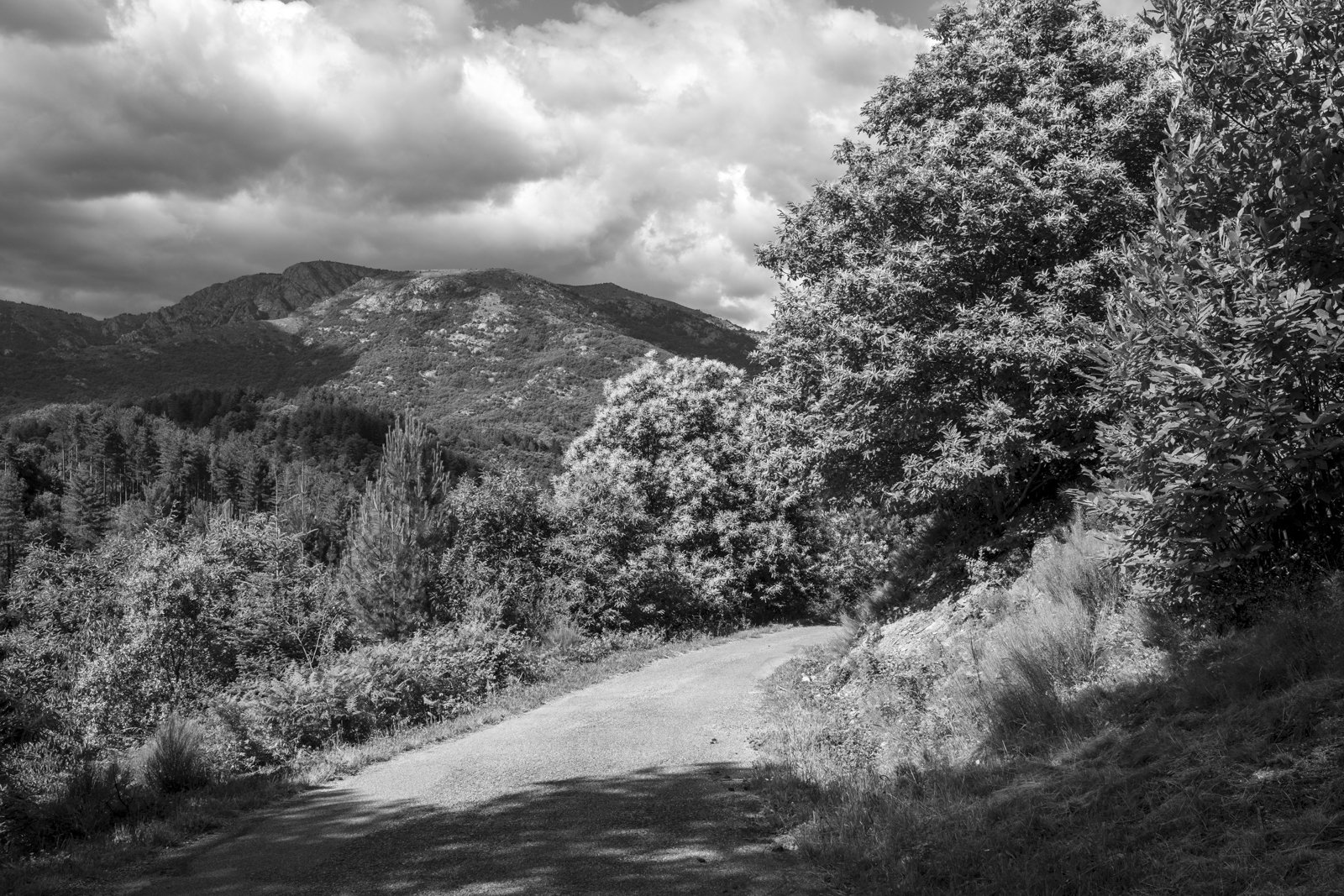Toward nuance — Photographic notes from the slopes of the Tanargue
Tanargue, Ardèche France
For some time now, I’ve been circling the Tanargue Massif with nothing but a camera as my compass. There’s nothing spectacular about this approach. No set project, no storyboard. Just slow walks, returning along the same paths, moments of hesitation, images sometimes — and above all, a gaze that changes.
The Tanargue, with its steep slopes and open ridgelines, refuses to be captured in a simple image. Too complex, too vast, and too silent as well. It imposes its own rhythm. It resists. And that resistance is slowly shaping the way I photograph. It forces me to rethink what I thought I knew, to let go of certain formal habits, especially those tied to black-and-white processing.
My first images of the massif were still marked by a desire for strong contrasts: deep blacks, pronounced whites, clear graphic tensions. As if the land, to be seen, needed to be summoned with force. But as the walks went on, as the seasons changed, I began to feel that this visual language no longer fit. That the Tanargue was asking for something else: less assertion, more attentiveness.
And so began a shift toward a subtler, more open black and white. A softer kind of photography, one that embraces the greys as moments to breathe. Not an image that seeks to dominate its subject, but one that aligns with it. Not a desire to capture, but to accompany.
This formal shift is also a way of inhabiting the landscape. Of recognizing in each photograph not a finished work, but a gesture, a fragment, a trace. Far from any attempt at inventory or total representation, this ongoing series resembles more a visual journal — a logbook — kept from the paths, the stones, the mists of the Tanargue.
What I seek now is not a “strong” image, but a true one. An image that makes room for what trembles, for what escapes. An image that doesn’t speak at first glance, but to the one who comes back.
Tanargue, Ardèche France


